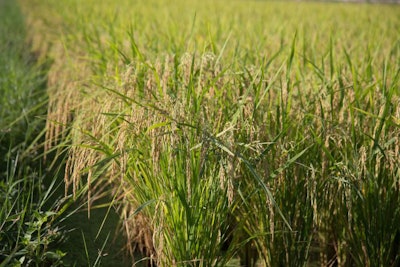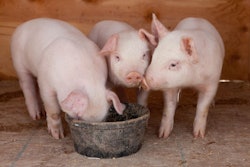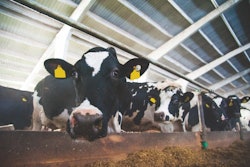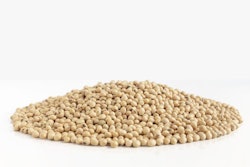
Widely available material is mostly burned in fields, creating pollution, but Indian officials want treated rice paddy straw to be used as animal feed
Research suggests that rice paddy straw can be used as animal feed for ruminants across southeast Asia and China.
A research paper from the Guru Angad Dev Veterinary and Animal Sciences University (GADVASU) in Ludhiana, India, says 20 million tons of paddy straw is produced in the state of Punjab per year, but almost all of it is burned in fields as a waste product, creating air pollution.
“This accounts for economic loss apart from the loss of 77,000 tons of nitrogen and 5.6 million tons of total digestible nutrients (TDN) which could be used for ruminant production,” the paper said, adding that “the requirement of feed and fodder for ruminants at national level is in deficit. The situation will get worse in terms of availability of both green and dry fodder during coming years.”
To make the paddy straw a viable fodder for animals, the paper recommends two methods: a urea-only treatment and a urea-plus-molasses treatment.
“Urea treatment of paddy straw has a vast potential to improve animal productivity for rice straw,” the report said.
Compared with untreated straw, the report said crude protein (CP), digestible crude protein (DCP) and total digestible nutrients (TDN) were much higher. CP increased from 4.5% to 8%, DCP from 1.5% to 4% and TDN from 40% to 55%.
“The feeding of urea treated straw (6 kg/day) to lactating buffaloes giving about 10 kg milk/day can result in saving about 60% of oilseed cake in the ration. Feeding of paddy straw should be mixed with berseem, cowpea or lucerne as it forms a maintenance ration. The straw should be fed with concentrate mixture and additional DCP or limestone should be given to the animals to reduce the effect of oxalates. Oxalates also interfere in carbohydrate metabolism perhaps due to non-availability of calcium as cofactor,” the report said.
According to a report, a letter recently issued by a Punjab animal husbandry official said that the use of paddy straw as animal fodder – after the urea and molasses treatment – will greatly reduce the air pollution caused by burning the material.
The letter said low quantities of treated paddy straw should be fed to animals “on an experimental basis” and the animals should be monitored for any signs of illness.

















